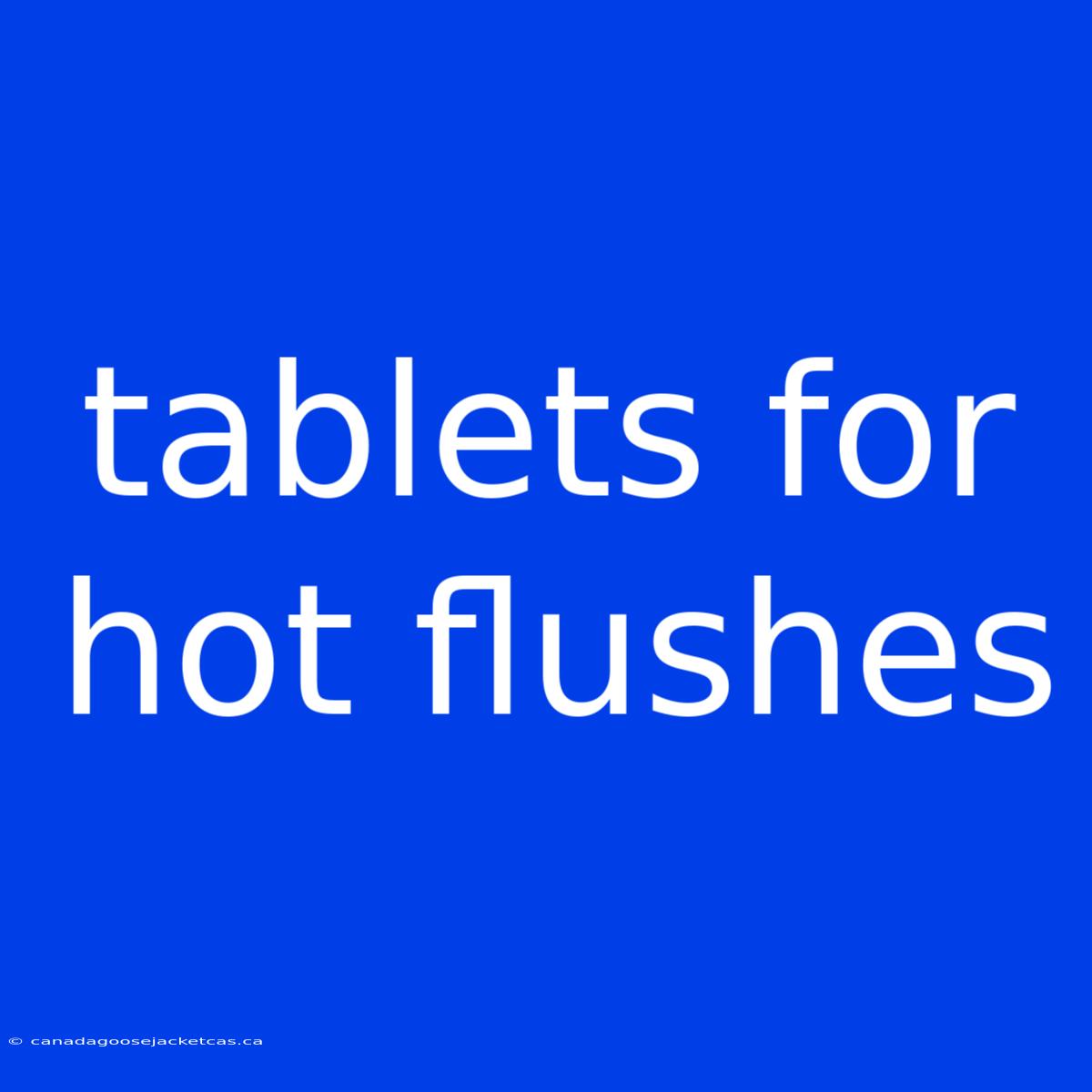Tablets for Hot Flushes: Finding Relief for Menopausal Symptoms
Hot flushes, a common symptom of menopause, can be disruptive and uncomfortable. Are tablets the answer to finding relief? Tablets offer a range of solutions for managing hot flushes, but navigating the options can be challenging. This article provides a comprehensive guide to tablets for hot flushes, exploring their benefits, risks, and how to choose the right treatment.
Editor Note: This guide on tablets for hot flushes is intended for informational purposes only and does not constitute medical advice. Always consult a healthcare professional for personalized guidance on managing menopausal symptoms.
Understanding the impact of hot flushes is vital. These sudden sensations of intense heat, often accompanied by sweating and palpitations, can significantly affect daily life, impacting sleep, mood, and overall well-being.
Analysis: We reviewed a range of medical studies and expert recommendations to provide this comprehensive guide. This analysis dives deep into the various types of tablets available, their effectiveness, potential side effects, and how to choose the best treatment option based on individual needs.
Key Takeaways on Tablets for Hot Flushes:
| Type of Tablet | Mechanism | Benefits | Risks |
|---|---|---|---|
| Hormone Therapy (HT) | Replaces declining estrogen levels | Reduces hot flush frequency and severity | Potential for blood clots, stroke, and breast cancer |
| Non-Hormonal Options | Target specific physiological pathways | Provide relief from hot flushes without hormonal effects | May cause mild side effects, varying in effectiveness |
Tablets for Hot Flushes
Hormone Therapy (HT):
- Introduction: HT, often referred to as menopausal hormone therapy, works by replacing the estrogen that declines during menopause. This helps regulate body temperature and reduce the frequency and intensity of hot flushes.
- Key Aspects:
- Types: HT comes in various forms, including tablets, patches, gels, and rings. Each has different absorption rates and side effect profiles.
- Estrogen Types: HT can contain different types of estrogen, each with its own benefits and risks.
- Progesterone: For women with a uterus, progesterone is often added to HT to reduce the risk of uterine cancer.
Non-Hormonal Options:
- Introduction: These tablets focus on specific physiological pathways that influence hot flushes without affecting hormone levels.
- Key Aspects:
- Antidepressants: Some antidepressants, such as venlafaxine, can effectively reduce hot flushes by affecting neurotransmitters involved in regulating body temperature.
- Gabapentin: This anticonvulsant medication, typically used for nerve pain, has shown promise in reducing hot flushes.
- Clonidine: A blood pressure medication, clonidine, can also be used to manage hot flushes by affecting the sympathetic nervous system.
Choosing the Right Tablet:
Factors to Consider:
- Individual needs and medical history: Previous health conditions, medications, and personal preferences should all be considered.
- Severity and frequency of hot flushes: The intensity and frequency of hot flushes can influence the choice of medication.
- Risks and benefits: It's crucial to weigh the potential benefits of each tablet against its associated risks.
Always consult a healthcare professional to determine the most suitable treatment plan for you.
FAQ:
- Q: Is hormone therapy safe?
- A: HT can be safe for many women, but it carries potential risks. A thorough discussion with your doctor is essential to determine if HT is right for you.
- Q: What are the side effects of non-hormonal options?
- A: Non-hormonal tablets can have varying side effects, ranging from mild to more significant. These can include nausea, dizziness, and drowsiness.
- Q: How long do I need to take tablets for hot flushes?
- A: The duration of treatment depends on the chosen medication and individual response. Your doctor will guide you on the appropriate length of therapy.
Tips for Managing Hot Flushes:
- Wear loose-fitting, breathable clothing.
- Keep your bedroom cool and well-ventilated.
- Avoid triggers like spicy foods and alcohol.
- Practice relaxation techniques like deep breathing and meditation.
Summary:
Navigating the world of tablets for hot flushes can be daunting. This guide aims to provide essential insights into the various options available, highlighting their benefits, risks, and factors to consider when making informed decisions.
Closing Message: While tablets offer effective solutions for managing hot flushes, seeking personalized guidance from a healthcare professional is paramount. This ensures you receive the safest and most appropriate treatment for your individual needs, allowing you to navigate menopause with confidence and comfort.

